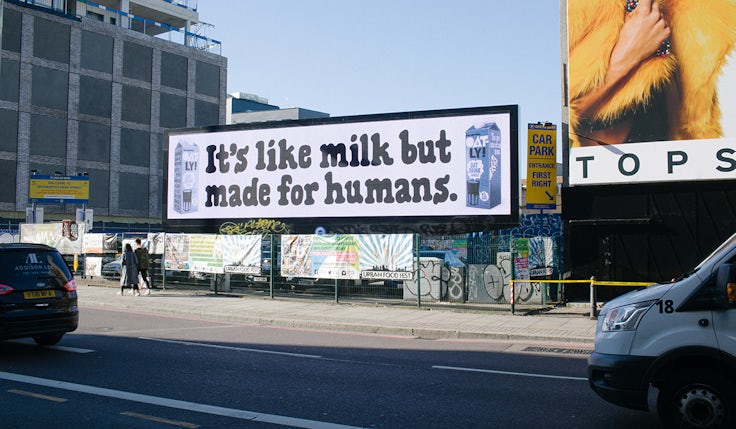Why omnichannel retailers won at Christmas
With online driving sales at the likes of John Lewis and Sainsbury’s over Christmas, retail brands are catering for a truly omnichannel consumer.

The numbers are telling. Over the six weeks to 31 December, online accounted for 40% of total sales at John Lewis, while sales from mobile devices were up 80% and now account for 37% of all traffic to the John Lewis website. To put these figures into perspective, shop sales at John Lewis were up just 0.8%, with the vast majority of consumers clearly preferring the convenience of online or click-and-collect.
It’s a similar story at its rival Marks & Spencer. More than 30% of the retailer’s website traffic now comes from its mobile phone app, while 62% of its online sales are now picked up in stores.
Sir Charlie Mayfield, chairman of the John Lewis Partnership, admits he had expected online growth to slow down in 2016, after accounting for a slimmer 36% of the brand’s total sales the previous Christmas. But he says its “unavoidable growth” has now made investing in online infrastructure one, if not the biggest, of John Lewis’s investment priorities.
Speaking to Marketing Week, he explains: “Yes, there are now a lot more digital-only shoppers but they aren’t our focus. The most valuable shoppers are the ones who shop across multiple channels as they tend to spend a lot of money with us.
“So while digital is a big focus, I wouldn’t say we’re a digital-first business, it’s more just waking up to the fact consumers now need multiple efficient options to access our brand.”
Striking the right balance

Sainsbury’s also saw strong online sales over the festive period. Total online sales at the grocer were up 9% for the 15 weeks to 7 January. And when you add in Argos sales, online represents 18% of total sales. Argos itself saw “record levels of online participation”, with 65% of its sales taken online over Christmas and a 13% rise in online sales.
When Sainsbury’s acquired Argos for £1.4bn, its CEO Mike Coupe repeatedly said the move was all about building for the future. And much like John Lewis, you sense he sees the primary worth of physical space as an amplifier to online sales.
READ MORE: Sainsbury’s boss: It is nonsensical to doubt Argos acquisition
Coupe expects more retailers to prioritise multichannel over the coming years and says those that invest in “one more than the other” risk failure. Sainsbury’s has click-and-collect at 200 stores and he claims consumers that use the service inevitably end up spending a “considerable” amount of money in-store as well.
The reality is nobody is making any profits from online so the best way to do so is to ease people into click-and-collect
Sainsbury’s currently has 38 Argos concessions within its supermarkets and Coupe says “well over” half of the transactions at these stores are through click-and-collect or with a transaction that starts online.
“We have created our entire strategy around the fact our customers want us to be there whenever and wherever they want. We’d love shoppers to continue to shop at our big supermarkets but we also realise online will only keep rising and you need to be prepared [for every scenario]. Click-and-collect is crucial, and if you take Argos, which now has nearly £1bn of its sales through a mobile device, it’s clear that would have been inconceivable just five years ago,” he tells Marketing Week.
According to TCC Global’s Bryan Roberts the hysteria of a few years back, when many analysts were claiming the death of the high street would turn many iconic retail brands into digital-only businesses, was short-sighted. With Amazon actively eyeing physical retail locations, he says there is now evidence that every single pure-play retailer will end up with a high street site.
Finding the right partners
He says the multichannel success of John Lewis, which saw an 18% rise in click-and-collect orders picked up in one of its sister brand Waitrose’s stores last Christmas, has not gone unnoticed.
“Every retailer will be looking for similar internal partnerships that join up the online and physical retail operations. The reality is nobody is making any profits from online so the best way to do so is to ease people into click-and-collect, which both John Lewis and Sainsbury’s via Argos are doing very cleverly,” he explains.
“Digital first thinking will become paramount, especially within the marketing side, as being able to entice people to do click and collect makes the best business sense.”

The partnerships Roberts speaks of can also manifest in ways beyond click-and-collect. Morrisons, which has its own ecommerce platform through its deal with Ocado, also serves as a wholesale partner to Amazon, essentially providing Amazon Fresh with various own label fresh food items.
For the nine weeks to 1 January, Morrisons posted a 2.9% rise in like-for-like sales, its best performance over the festive period in seven years. And speaking to Marketing Week, its CEO David Potts seemed to be a man finally being won over by ecommerce.
“What impressed me with our wholesale partnership with Amazon was that thousands of customers made orders at 4.32pm on Christmas Eve and then received Morrisons groceries two hours later,” he claims.
“Moving forward, we now see profitable growth from online and our partnerships, whereas before we maybe had a much more capital light approach to our investment in it as a channel. As a wholesaler to Amazon, which is a progressive brand, so long as it keeps growing in Britain, so will Morrisons.”
And with established retailers such as Asda and Next – both not exactly reknowned for their cutting edge omnichannel offers – struggling over the festive period, Potts’ confidence in online growing hand-in-hand with a physical offering doesn’t look misplaced.






